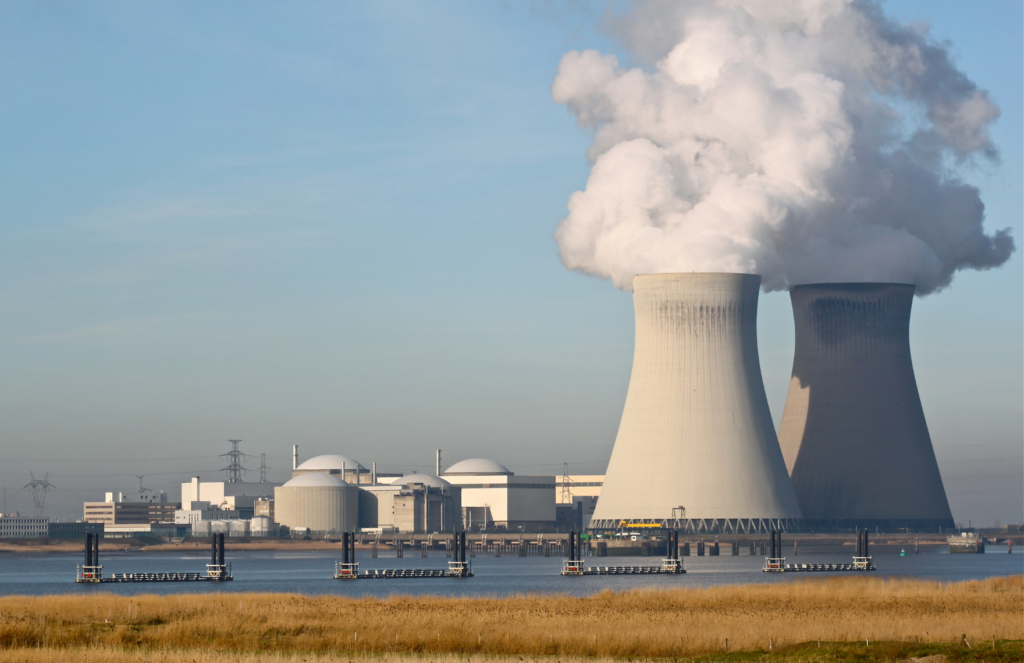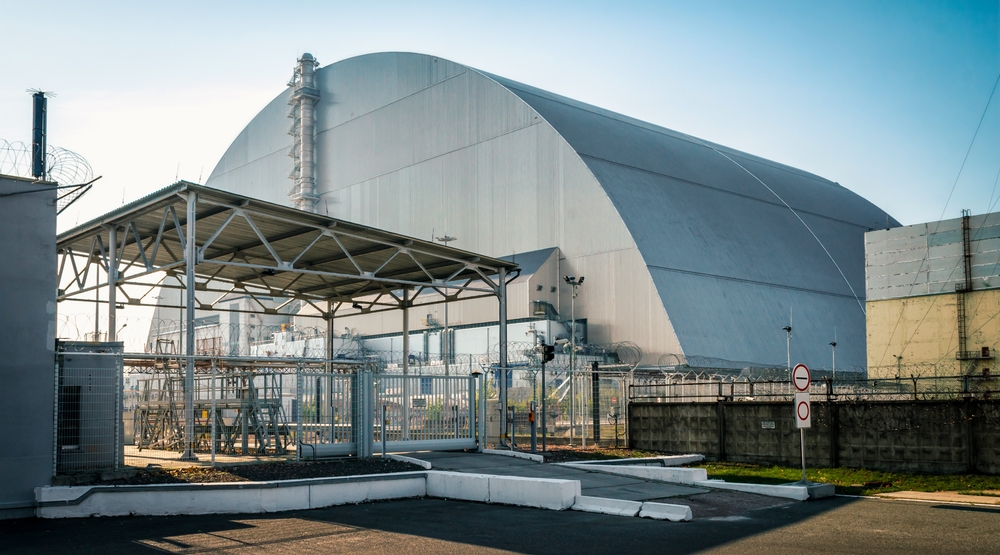Nuclear engineering is expected to enhance energy security and combat climate change in 2025. Its future promises to address some of the world’s most pressing energy challenges.
Generation-IV nuclear reactors are being developed with enhanced safety features, improved efficiency and reduced waste production. These advanced systems aim to overcome the limitations of current nuclear technologies while providing a sustainable, low-carbon energy solution.
The industry is also focusing on developing competencies for future nuclear technologies. This aims to ensure a skilled workforce that can drive innovation and maintain safety standards in the future.
Evolution of nuclear technology
Nuclear engineering advances rapidly, with innovations transforming reactor designs, safety systems and operational efficiency. These developments promise to shape the future of nuclear power generation.
Advancements in nuclear designs
Modern nuclear reactor designs prioritise enhanced safety features and improved efficiency. Generation IV reactors are at the forefront of this evolution, offering passive safety systems and reduced waste production.
High-temperature gas-cooled reactors (HTGRs) represent a significant leap forward. These designs use helium as a coolant and graphite as a moderator, allowing for higher operating temperatures and increased thermal efficiency.
Molten salt reactors are another promising concept. They use liquid fuel, potentially offering better fuel efficiency and inherent safety advantages.
Artificial Intelligence (AI) in nuclear systems
AI is revolutionising nuclear plant operations and maintenance. Machine learning algorithms optimise fuel usage, predict equipment failures and enhance plant performance.
Advanced neural networks are improving reactor control systems, enabling more precise power output adjustments and faster responses to operational changes.
AI-driven predictive maintenance is reducing downtime and extending the lifespan of critical components. This technology analyses vast amounts of sensor data to identify potential issues before they become serious problems.
Small Modular Reactors (SMRs)
SMRs represent a paradigm shift in nuclear power generation. These compact reactors, typically generating less than 300 MW of electricity, offer numerous advantages over traditional large-scale plants.
SMRs are more flexible regarding siting and can be deployed in remote areas or regions with limited grid capacity. Their modular design allows for factory fabrication, reducing construction times and costs.
Many SMR designs incorporate advanced passive safety features, further enhancing their appeal. These reactors could provide clean, reliable baseload power to complement renewable energy sources.


Economic aspects of nuclear power
Nuclear power’s economic viability hinges on several key factors, including project financing, market competitiveness and long-term revenue agreements. These elements shape the industry’s future and determine its role in the global energy mix.
Financing nuclear projects
Nuclear power plant construction requires substantial upfront capital investment. The estimated cost for new nuclear projects can range from £6 billion to £20 billion, depending on the reactor design and location. Private sector involvement is crucial, but government support often plays a significant role.
Innovative financing models are emerging to mitigate risks. These include:
- Public-private partnerships
- Regulated Asset Base (RAB) models
- Government loan guarantees
These approaches aim to reduce the cost of capital and attract investors by providing more certainty on returns.
Competitiveness with renewables and fossil fuels
Nuclear power faces stiff competition from renewable energy sources and fossil fuels. Although nuclear plants offer stable baseload power, their high upfront costs can make them less attractive in some markets.
Key factors affecting competitiveness:
- Carbon pricing: Favours nuclear over fossil fuels
- Renewable subsidies: Can disadvantage nuclear
- Fuel price volatility: Nuclear has stable fuel costs
Despite challenges, nuclear power remains competitive in many regions due to its low operational costs and long plant lifespans.
Power Purchase Agreements
Power Purchase Agreements (PPAs) are critical for securing the long-term economic viability of nuclear projects. These contracts typically span 15-30 years and provide a guaranteed revenue stream for plant operators.
PPAs for nuclear power often include:
- Fixed price or inflation-linked pricing structures
- Capacity payments for availability
- Provisions for regulatory changes
The stability offered by PPAs helps offset the high initial investment costs and can make nuclear projects more attractive to investors. However, negotiating favourable terms can be challenging in competitive energy markets.
Global nuclear energy trends
Nuclear energy is poised to play a significant role in the global energy landscape as countries seek to meet decarbonisation targets and address climate change. The industry is experiencing growth in installed capacity and expanding into new applications beyond electricity generation.
Installed nuclear capacity worldwide
Global nuclear capacity is projected to increase in the coming years. According to the International Energy Agency, several countries are investing in new nuclear power plants to meet rising electricity demand while reducing carbon emissions.
China and India are leading this expansion with ambitious plans to boost their nuclear fleets. In Europe, countries like France and the UK are also pursuing new nuclear projects to replace ageing reactors and maintain their nuclear capacity.
Small Modular Reactors (SMRs) are gaining traction as a more flexible and cost-effective option for nuclear deployment. These compact designs could open up new markets and applications for nuclear technology.
Decarbonisation targets and nuclear’s role
Nuclear energy is increasingly recognised as crucial for meeting ambitious climate goals. Many countries incorporate nuclear power into their long-term energy strategies to achieve net-zero emissions targets.
The EU has included nuclear energy in its taxonomy for sustainable activities, acknowledging its potential to support decarbonisation efforts. This decision is expected to drive investment in nuclear projects across the bloc.
Nuclear power’s ability to provide reliable, low-carbon baseload electricity complements the intermittent nature of renewable sources like wind and solar. This is crucial for maintaining grid stability while reducing overall emissions from the power sector.
Nuclear energy in hard-to-abate sectors
Nuclear technology expands beyond traditional electricity generation to address emissions in hard-to-abate sectors. One promising application is clean hydrogen production using nuclear heat and electricity.
High-temperature reactors could provide the intense heat required for industrial processes, potentially decarbonising sectors such as steel and cement manufacturing. These applications could significantly reduce emissions from industries that have traditionally been challenging to decarbonise.
Nuclear-powered desalination is another emerging trend that solves water scarcity issues in coastal regions. This technology could provide fresh water without the carbon footprint associated with conventional desalination methods.


Energy demand and nuclear generation
Global energy needs continue to rise, driven by population growth and increasing electrification. Nuclear power is a viable option for meeting this demand while reducing carbon emissions.
Electricity demand growth projections
Electricity demand is expected to grow significantly by 2025. The International Energy Agency projects a 2.1% annual increase in global electricity consumption through 2025. Developing nations account for most of this growth as their economies expand and living standards improve.
Factors driving demand include:
- Increasing population
- Rising industrial output
- Growing middle class in emerging markets
- Wider adoption of electric vehicles
Nuclear energy strategies will play a crucial role in meeting these electricity needs sustainably.
Meeting rising energy needs with nuclear
Nuclear power offers a reliable, low-carbon solution for baseload electricity generation. As of 2025, nuclear reactors provide about 10% of global electricity. Many countries are expanding their nuclear capacity to meet rising demand.
Key advantages of nuclear generation include:
- High capacity factor (90%+)
- Low operating costs
- Minimal CO2 emissions
- Long plant lifespans (60+ years)
Advanced reactor technologies like small modular reactors show promise for flexible deployment.
Electric vehicles and electricity needs
The electric vehicle (EV) revolution is reshaping electricity demand patterns. EV adoption is accelerating, with global sales projected to reach 10 million units in 2025. This surge in EVs will significantly impact grid requirements.
Key considerations:
- Increased overall electricity demand
- Higher peak loads during evening charging times
- Need for smart charging infrastructure
- Potential for vehicle-to-grid technology
Nuclear power’s consistent baseload generation complements the variability of renewables in supporting EV charging needs. Future electricity generation strategies must account for this evolving demand landscape.
Safety, regulation and public perception
Nuclear engineering in 2025 faces critical challenges in safety, regulation and public acceptance. Advancements in technology and policy aim to address these concerns while promoting the industry’s growth.
Nuclear safety enhancements
The nuclear industry continues to prioritise safety through innovative technologies and improved protocols.
Generation III standards are now the benchmark for new reactor designs, incorporating passive safety features that enhance reliability and reduce the risk of accidents.
Advanced monitoring systems use artificial intelligence to detect potential issues before they escalate. These systems analyse vast amounts of data in real-time, allowing for proactive maintenance and risk mitigation.
Improved emergency response plans have also been developed, incorporating lessons from past incidents. These plans involve better coordination between plant operators, local authorities and emergency services.
Regulatory frameworks and compliance
Regulatory bodies have strengthened their oversight of the nuclear sector and implemented more stringent safety and security measures. Infrastructure and regulation have become key areas for ensuring the industry’s long-term viability.
Compliance requirements now extend beyond operational safety. They also include cybersecurity, environmental impact and waste management. Nuclear facilities must demonstrate robust defence against cyber threats and natural disasters.
International cooperation has increased, with regulatory bodies sharing best practices and harmonising standards across borders. This collaboration aims to elevate global nuclear safety and security.
Public acceptance of nuclear projects
Public perception remains a significant challenge for the nuclear industry. Efforts to improve transparency and communication have yielded mixed results. Educational dialogues have been initiated to address public concerns and misconceptions about nuclear energy.
Proponents highlight nuclear energy’s role in combating climate change and ensuring energy security. They emphasise the industry’s safety record and technological advancements.
Critics continue to raise concerns about waste management, potential accidents and the long-term environmental impact. The industry faces ongoing challenges balancing these concerns with the need for low-carbon energy sources.


Supply chain and human resources
The nuclear industry faces challenges in securing reliable fuel sources and developing a skilled workforce. These factors will significantly impact the sector’s growth and sustainability in the coming years.
Uranium production and supply chains
Uranium production and supply chains are critical components of the nuclear energy sector. Global uranium production is expected to increase moderately by 2025 to meet growing demand. Kazakhstan, Canada and Australia will likely remain the top producers.
Nuclear power plants require a stable supply of uranium fuel. Due to geopolitical tensions and transportation issues, supply chain challenges may arise. Diversifying uranium sources and establishing strategic reserves will be crucial for energy security.
Advanced nuclear technologies may reduce uranium requirements through improved fuel efficiency. This could alleviate some supply pressures but will take time to implement widely.
Skill shortages and workforce development
The nuclear industry is grappling with an ageing workforce and skill shortages. Attracting and retaining young talent is essential for the sector’s future. Universities and technical schools are expanding nuclear engineering programmes to address this issue.
Demand for nuclear experts in the EU is projected to increase by 30% by 2030. This growth will require proactive workforce planning and development strategies.
Key areas facing shortages include:
- Reactor operators
- Nuclear safety specialists
- Decommissioning experts
- Advanced reactor designers
Industry-academia partnerships and apprenticeship programmes are being established to bridge the skills gap. Digital technologies and virtual reality training are also employed to enhance workforce capabilities and knowledge transfer.
Integration with other energy sources
Nuclear engineering in 2025 will focus on seamless integration with renewable energy sources to enhance grid stability and energy security. This approach aims to create a balanced and reliable clean power ecosystem.
Nuclear and renewables synergy
Nuclear power plants are designed to work harmoniously with renewable energy sources. Engineers are developing flexible nuclear reactors that adjust output based on wind and solar power availability. This allows for optimal integration of nuclear energy with other renewable energy sources.
Advanced control systems are being implemented to enable real-time communication between nuclear facilities and renewable energy installations. These systems help balance energy production and consumption, ensuring a steady supply of clean power to the grid.
Nuclear engineers are also exploring ways to use excess nuclear energy during low-demand periods. One promising avenue is the production of hydrogen fuel, which can be stored and used when renewable sources are less productive.
Grid stability and backup capacity
Nuclear power plants are crucial in maintaining grid stability as the share of intermittent renewable sources increases. Engineers are developing innovative approaches to integrate nuclear power into energy systems, providing reliable backup capacity when needed.
Next-generation nuclear reactors are being designed with enhanced load-following capabilities. This feature allows them to quickly ramp up or down in response to fluctuations in renewable energy output, ensuring a consistent power supply.
Energy storage solutions, such as advanced batteries and pumped hydro storage, are being integrated with nuclear plants. These systems help smooth out power fluctuations and improve overall grid resilience.
Major tech companies like Microsoft are partnering with nuclear engineering firms to develop AI-powered grid management systems. These systems optimise the interplay between nuclear and renewable sources, enhancing energy security and efficiency.
FREQUENTLY ASKED QUESTIONS (FAQs)
In 2025, nuclear technology will likely see progress in advanced reactor designs. Small modular reactors (SMRs) are expected to gain traction, offering more flexible and scalable nuclear power options. Improvements in fuel efficiency and waste management techniques are also anticipated. These advancements aim to enhance safety, reduce costs and improve the overall performance of nuclear power plants.
The UK government has expressed support for new nuclear projects as part of its energy strategy. Several sites have been identified for potential new nuclear power stations. However, financing remains a significant hurdle. The government is exploring funding models to attract investors and reduce project risks.
Safety regulations are expected to become more stringent, reflecting lessons learned from past incidents and incorporating new technological capabilities. This may lead to increased design and operational requirements for nuclear facilities. Engineers will need to adapt to these changes, which could modify existing plants and influence the design of new reactors.
Nuclear energy is poised to be crucial in meeting sustainable energy targets. As a low-carbon energy source, it can help reduce greenhouse gas emissions from the power sector. Advanced nuclear technologies may also contribute to producing clean hydrogen and provide process heat for industrial applications, further supporting decarbonisation efforts.
Nuclear engineers must develop expertise in new reactor technologies, such as SMRs and Generation IV designs. This may require additional training and specialisation in advanced materials and digital control systems. The role may include more interdisciplinary collaboration, particularly in sustainability and integration with renewable energy systems.
Cost competitiveness remains a significant challenge for the nuclear industry. High initial capital costs and long construction times can make nuclear projects less attractive than other energy sources. Public perception and acceptance continue to be hurdles in many regions. Addressing safety and waste management concerns will be crucial for the industry’s growth. Workforce development is another key challenge. The industry must attract and retain skilled professionals to support existing plants and new technologies.